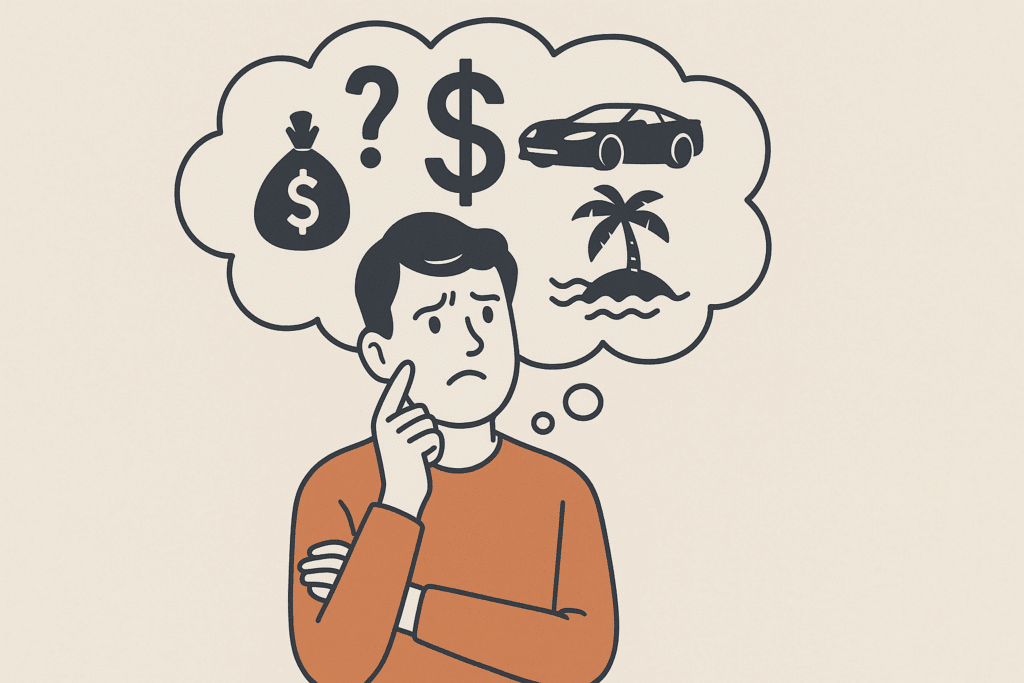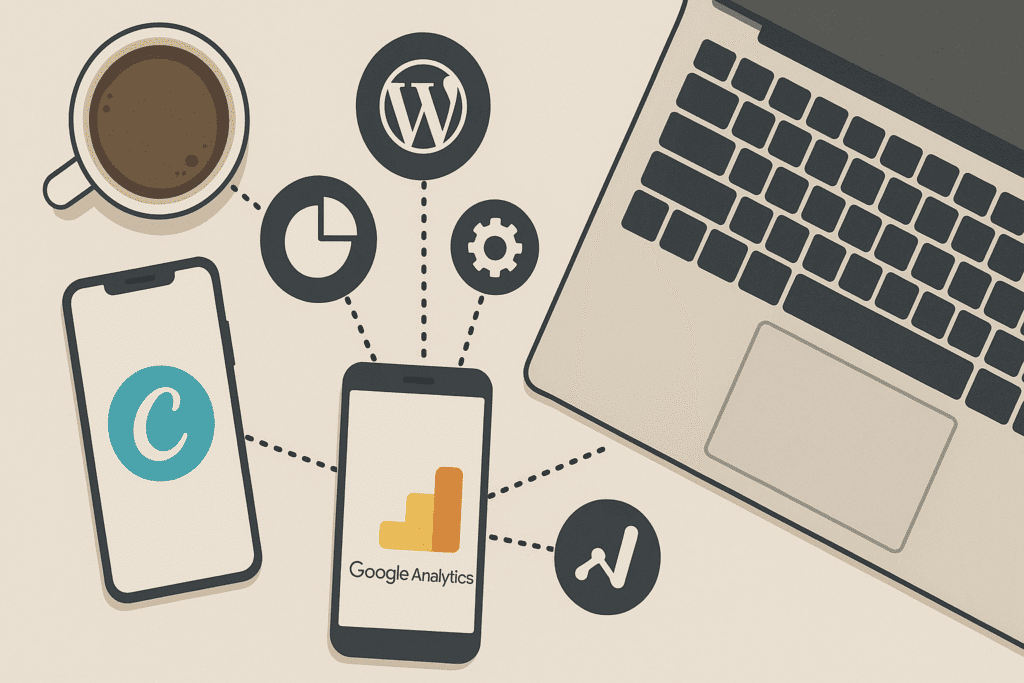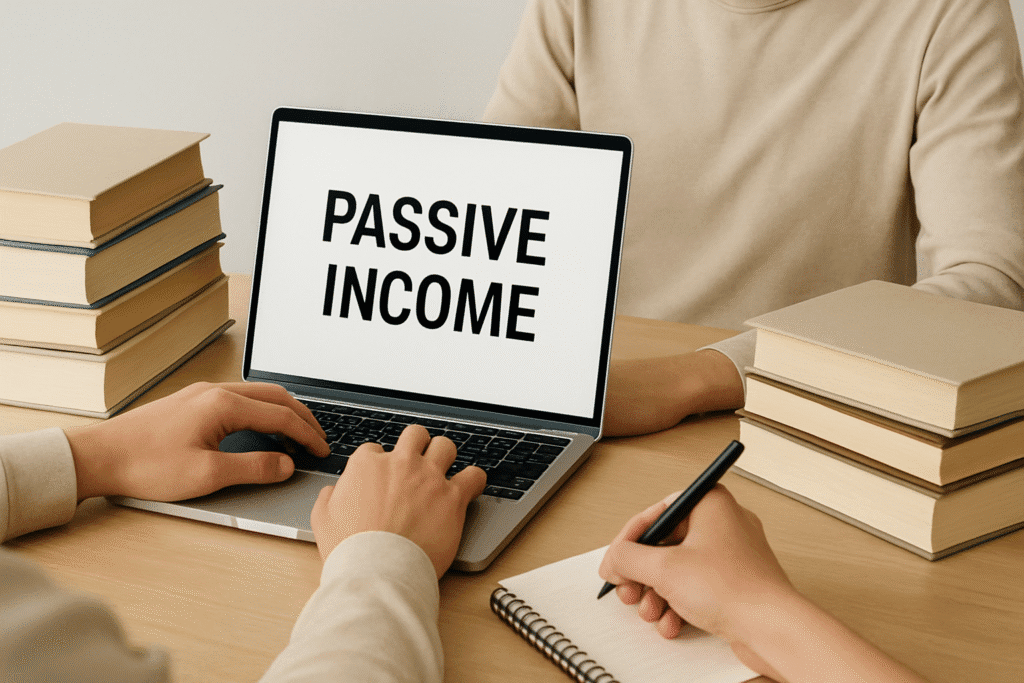Introduction

The dream sounds irresistible, right?
Make money while you sleep. Build once, earn forever. Escape the rat race with a few digital tricks. That’s the pitch everyone sells when they talk about “passive income.”
But here’s the raw truth — most of it is a well-packaged lie.
You see, behind every so-called “passive” income stream is a ton of upfront work, strategy, risk, and sometimes years of zero returns. It’s not magic. It’s not overnight. And it’s definitely not as passive as YouTube makes it sound.
This blog isn’t here to kill your ambition — it’s here to refocus it.
Because if you understand how passive income really works, you can still build it…
But not with blind hope.
Let’s break the illusion — and build something real.
Passive Income Isn’t Passive at All (At First)
You don’t earn without effort — you earn from delayed returns.
People love saying “build once, earn forever.” But no one mentions the months — even years — of setup, trial, and failure before a dollar rolls in. Whether it’s a blog, YouTube channel, digital product, or real estate — the grind is real upfront.
The silent cost? Time, energy, and risk.
Behind every “effortless” income stream is someone who spent hundreds of hours learning, experimenting, and pushing through when no one was watching. It’s not just a few clicks and cash-out.
Why they won’t tell you this:
Because struggle doesn’t sell. Nobody’s buying a course that says “you’ll work 12 months before seeing a cent.” But that’s the truth — and knowing it early helps you avoid burnout and disappointment.
Key Takeaway:
If it doesn’t feel passive now, that doesn’t mean you’re failing.
It means you’re doing it right.
The “Set It and Forget It” Lie About Digital Products
Digital products sound dreamy — until you realize they need constant care.
E-books, templates, courses — they’re marketed as “fire-and-forget.” But that’s fiction. You’ll need updates, customer support, refunds, marketing, and algorithm games just to keep them alive.
You don’t just sell once — you sell forever.
Every “passive” sale is backed by active systems: email funnels, SEO, ads, testimonials, social proof, launches, discounts. If you stop promoting? Sales stop too.
The hidden truth:
Most digital product creators earn less than $100 a month. What you see online are the exceptions — not the rule. The average creator is still hustling.
Key Takeaway:
Digital products are powerful — but not self-sustaining.
You’ll either feed them with time… or watch them fade.
Rental Income and Dividends: Not as Passive as They Sell You
You’ve been sold a dream: “Earn while you sleep.”
But rental properties? They don’t sleep — they leak, they break, they bring tenant drama at 2 AM. Even with a property manager, the costs, taxes, and headaches pile up.
Dividends? Sure, if you’re already rich.
The truth is, to make $1,000/month from dividends, you need to invest around $300,000 in solid, low-risk stocks. Most people barely have $3,000 in savings.
Investments are passive only after heavy lifting.
You work like crazy to earn money, then invest, then wait… for years. Passive income from investing is delayed gratification, not instant freedom.
Key Takeaway:
True passive income from assets requires massive upfront effort, money, or both. For the average person, it’s more “slow grind” than “magic flow.”
Content Monetization: Passive Income or Full-Time Job in Disguise?

YouTube, blogging, courses — everyone says it’s passive.
Upload once, earn forever, right? But what they don’t show you: the editing, SEO, thumbnails, constant algorithm changes, and months (even years) with zero traction.
Most creators never reach monetization.
You need 1,000 subscribers + 4,000 watch hours on YouTube. On blogs, you need serious traffic to earn a few bucks from ads. Passive? Only after grinding like a maniac.
Online courses require constant promotion.
They don’t sell themselves. You need an email list, ads, audience trust, and ongoing updates. Otherwise, your “passive” course becomes a digital ghost town.
Key Takeaway:
Content income becomes passive only after you’ve built a loyal audience, ranked in search, and hustled behind the scenes — daily.
The Mindset Trap: Are You Escaping Work or Impact?
Let’s be honest — most people chase passive income to escape work.
But here’s the twist: escaping isn’t the same as building. If your focus is “how can I make money doing nothing?” you’ve already lost.
Success isn’t passive — it’s intentional.
Every creator, investor, or entrepreneur who actually earns passively? They worked harder than anyone upfront. The passive part came later — like interest on discipline.
Chasing shortcuts kills your potential.
You start buying useless courses, jumping trends, and copying others instead of building your thing. It’s not freedom — it’s disguised dependency.
Key takeaway:
Passive income isn’t about doing less — it’s about doing the right things long enough to let results compound. Until then, it’s just hustle in disguise.
Real Paths to Semi-Passive Income (That Don’t Involve Lies)

1. Niche Blogging + Affiliate Marketing
Start a blog on a niche you truly understand. Use SEO, write quality content, and monetize with affiliate links (like Amazon). It’s not fast — but it compounds. Tools: WordPress, Yoast SEO, Google Analytics.
2. Digital Products That Solve Real Problems
eBooks, templates, online courses — but only if they genuinely help. Don’t regurgitate ChatGPT scripts and call it a product. Your product = your proof of work.
3. YouTube Automation (Done Right)
Faceless channels with scripts, voiceovers, and editing — but make it valuable. Don’t chase trends; build a brand. Focus on topics you can sustain long-term.
4. Stock Photography or Designs
If you’re creative, upload to platforms like Adobe Stock or Redbubble. One good design can earn for years — but only if it’s useful, not generic.
5. SaaS or Tools for a Micro-Niche
If you’re technical (or can partner with a developer), build a tool that solves a small but specific problem. Small user base, high loyalty.
Final Truth:
All these require effort, strategy, and time. But when done right, they become semi-passive engines, not scams. No Lamborghini ads. Just sustainable income.
Conclusion: Passive Income Isn’t What You Think — And That’s a Good Thing
If someone tells you passive income is “easy,” they’re selling you a dream — and likely a course.
True financial freedom comes from creating systems, not chasing shortcuts.
It means doing the hard work once — intentionally, smartly — so it pays off over time. Not instantly. Not magically. But consistently.
So next time you hear the phrase “make money while you sleep,” ask yourself:
Did they put in the work while they were awake?
Now you know the truth. No more illusions. Just the roadmap.
FAQs
Can you really make money passively?
Yes, but it’s not “do nothing and get rich.” It takes a lot of work upfront. Once you build systems (like a blog, YouTube channel, or digital product), the income becomes semi-passive — you’ll still need maintenance but far less time-consuming than the initial grind.
How long does it take to earn passive income?
It varies. For blogging or YouTube, it may take 6–12 months to see consistent results, sometimes longer. The key is persistence — results are a reflection of your effort over time.
Is passive income a scam?
The concept of passive income isn’t a scam, but the way it’s marketed can be misleading. Some claims make it seem like you can make money effortlessly, which is simply not true. Real passive income comes from hard work, systems, and smart strategies.
Do I need to be an expert to create passive income?
Not an expert, but you need to be knowledgeable or passionate about your niche. Authenticity and value are key to gaining trust and building a long-term audience.
How can I avoid passive income scams?
Stick to proven methods like blogging, affiliate marketing, or creating digital products. If something promises fast results with little effort, it’s likely a scam. Always look for real testimonials and transparent methods before investing your time or money.
